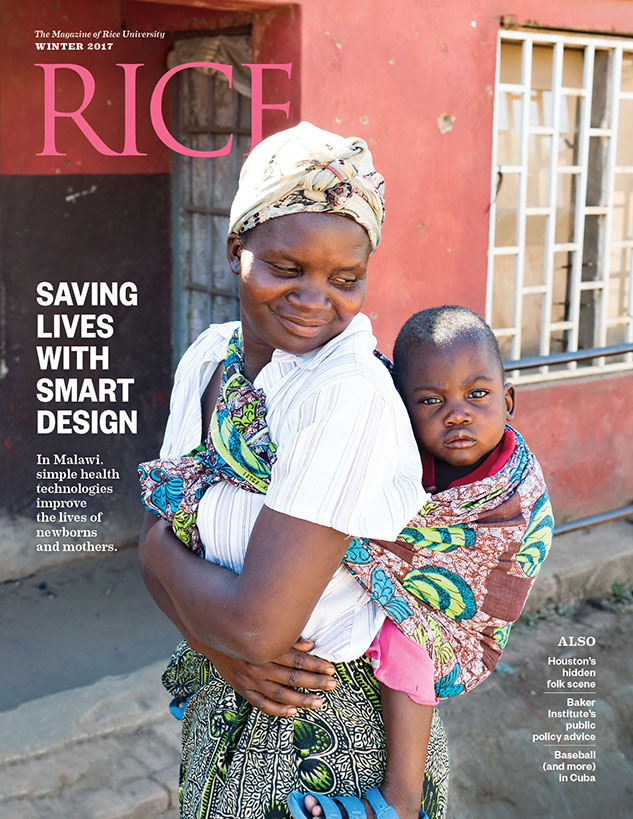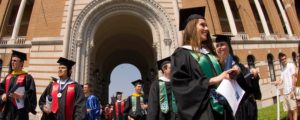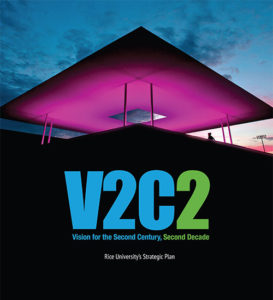
Do the Math
-
The strategies once used in baseball analytics are now being applied to employee management
-
Personality traits can help predict work performance
THE BASIC TOOLS OF MAJOR League Baseball have changed little over the years. Yet something enormous changed for the Boston Red Sox between 1918 and 2004, when they won their first and second World Series. A 21st-century innovation — logging data on players’ slugging and on-base percentages, for example — allowed managers to hire players for a winning team. The data launched a new field, sabermetrics, now nicknamed “moneyball.”
This data-driven approach can be as successful in running a major city as it was for a baseball team. Michael Bloomberg pioneered the use of big data sets to meet the logistical challenges of running New York City. Big data can sharpen the games of other businesses, too, argues Rice business professor Frederick Oswald and his former graduate student Jisoo Ock ’14. Thanks to computing advances, human resource analytics are changing from gut instinct into reliable predictions based in data.
For generations, human resource analysts have used what’s known as the “big five” model to predict how personalities affect work outcomes. The model is based on the idea that personality drives five types of behaviors — conscientious work, agreeableness with others, emotional calmness, sociability, and openness to ideas and experiences.
The scholars call for newer models that consider refined personality traits and types of work at the same time. To stay competitive, anyone who manages employees needs to keep an eye on the ball — constantly tracking the latest insights on people, the workplace and the whole field of employment.
— This brief was published first on ricebusinesswisdom.com. Oswald is a professor in the Department of Psychology and professor of psychology and management at the Jones Graduate School of Business.
[tw-divider][/tw-divider]

Photo illustration by Alese Pickering
Religion and Science Clash
-
Almost 70 percent of evangelical Protestants who responded to a national survey said that evolution is probably false
-
About 28 percent of evangelicals deny climate change or a human role in climate change
EVANGELICALS ARE MORE SKEPTICAL of evolution than of climate change, according to new research from Rice. In a recent edition of the journal Environment and Behavior, Rice sociologist Elaine Howard Ecklund explored the larger “anti-science” tendency that some see as related to membership in conservative religious groups such as evangelical Protestants.
Using national survey data, Ecklund examined the link between evolution skepticism and climate-change skepticism while considering religion’s association with both. The study included 9,636 Americans; Ecklund said the U.S. is up to 40 percent evangelical, depending on how the term is defined. The research revealed that about 20 percent of the U.S. population is skeptical that climate change is occurring at all or that humans play a role in it, and about 45 percent views natural evolution as probably or definitely false. However, the researchers found that there is a much stronger and clearer association between religion and evolution skepticism than between religion and climate-change skepticism.
Almost 70 percent of surveyed respondents identifying as evangelicals said that evolution is probably or definitely false, while only 28 percent of these individuals said that the climate is not changing or that humans have no role in climate change.
“This is different from the popular account that the people who oppose climate-change research and the people who oppose the teaching of evolution are the same and that evangelical Protestantism is clearly linked to both,” Ecklund said. She and her co-authors hope the research will provide insight into how different science issues may or may not interact with religion and politics and help science policymakers focus their efforts to address environmental care and climate change.
Ecklund is the Herbert S. Autrey Chair in Social Sciences at Rice and director of Rice’s Religion and Public Life Program.
Read more here.
— AMY MCCAIG
[tw-divider][/tw-divider]
“Cultures of Energy” Podcast Turns 1
 A year ago, Rice anthropologists Dominic Boyer and Cymene Howe launched the podcast “Cultures of Energy.” In more than 50 episodes, available for free on iTunes, the duo mines the complex and sometimes fraught relationship between energy, the environment and the humanities. They’ve covered climate change, species extinction, carbon fuels and alternative energies through the lens of scholars, artists and writers. Each episode features a different guest, which has included climate scientist Katharine Hayhoe, former Houston Mayor Annise Parker ’78, conservationist Bron Taylor and environmental anthropologist Anna Tsing, to name a few. Several episodes were marked “explicit,” due in part to the freewheeling conversational nature of the podcast.
A year ago, Rice anthropologists Dominic Boyer and Cymene Howe launched the podcast “Cultures of Energy.” In more than 50 episodes, available for free on iTunes, the duo mines the complex and sometimes fraught relationship between energy, the environment and the humanities. They’ve covered climate change, species extinction, carbon fuels and alternative energies through the lens of scholars, artists and writers. Each episode features a different guest, which has included climate scientist Katharine Hayhoe, former Houston Mayor Annise Parker ’78, conservationist Bron Taylor and environmental anthropologist Anna Tsing, to name a few. Several episodes were marked “explicit,” due in part to the freewheeling conversational nature of the podcast.
“The podcast is a great medium to reach people, because it can be engaged anywhere and anytime. It can make serious, complex issues seem more interesting through a livelier conversational format,” said Howe.
That format has paid off. “The average podcast has maybe 200 downloads per episode, so we thought we’d be lucky to get 10,000 downloads in the first year,” Boyer said. “We actually ended up with over 35,000 downloads in 2016.”
The project is part of Rice’s Center for Energy and Environmental Research in the Human Sciences, which was founded in 2013 to bring the arts, humanities and social sciences into the work of solving energy and environmental challenges.
— LYNN GOSNELL
[tw-divider][/tw-divider]
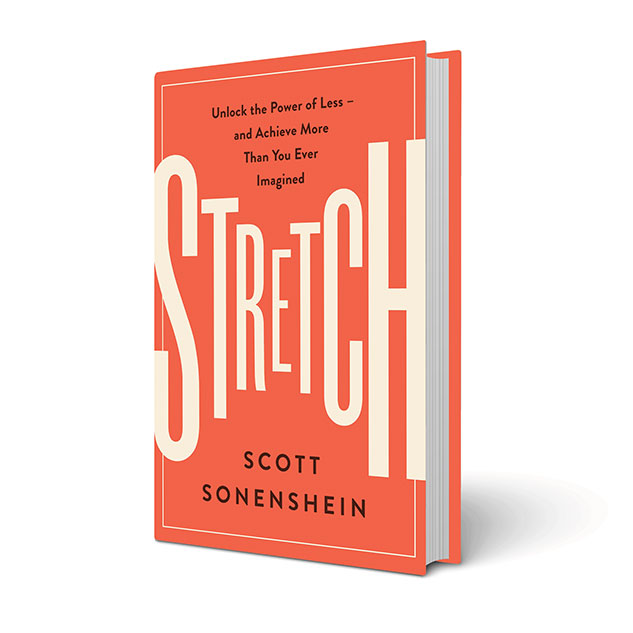 Stretch
Stretch
Unlock the Power of Less — and Achieve More Than You Ever Imagined
By Scott Sonenshein (Harper Business, February 2017)
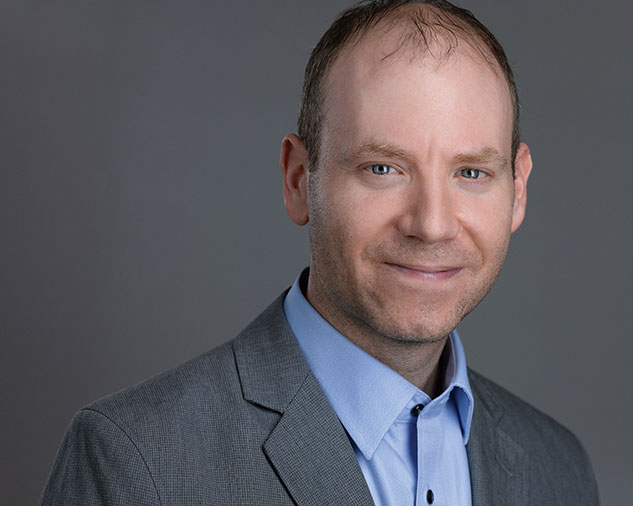 Scott Sonenshein, the Henry Gardiner Symonds Professor of Management at Rice’s Jones Graduate School of Business, thinks you have enough already. From physical objects to personal relationships, he argues that we should focus less on acquiring more, and draw out the full potential of what we already have. Some of the tips he shares in “Stretch,” based on his own research and recent social science findings, include:
Scott Sonenshein, the Henry Gardiner Symonds Professor of Management at Rice’s Jones Graduate School of Business, thinks you have enough already. From physical objects to personal relationships, he argues that we should focus less on acquiring more, and draw out the full potential of what we already have. Some of the tips he shares in “Stretch,” based on his own research and recent social science findings, include:
Be a stretcher, not a chaser. Sonenshein’s approach runs counter to many of our instincts. Instead of chasing after more resources, he urges us to consider what we could do with fewer. Stretching, in part, means to stretch your brain, asking yourself, “What would I do if I didn’t have this resource?”
Embrace constraints. Many artists have already discovered that seemingly reductive limits — whether financial, physical or self-imposed stylistic constraints — can actually enhance creativity. Sonenshein shows that the same has proved true in lab rats and elementary schoolchildren — and will work for the rest of us.
Pick your friends carefully. Since who we spend time with has a demonstrated effect on our own behavior, surround yourself with stretchers, not chasers. At work and in your personal life, aim to spend time with stretchers whom you admire.
Take a break. Being focused isn’t always a good thing, Sonenshein argues. Like constraints, distraction can also enhance creativity. And don’t work too hard coming up with the perfect break: mindless labor is as good as meditation. So clean your house, do some filing or even pick up an adult coloring book. You’ll be more productive in the long run.
— JENNIFER LATSON
[tw-divider][/tw-divider]
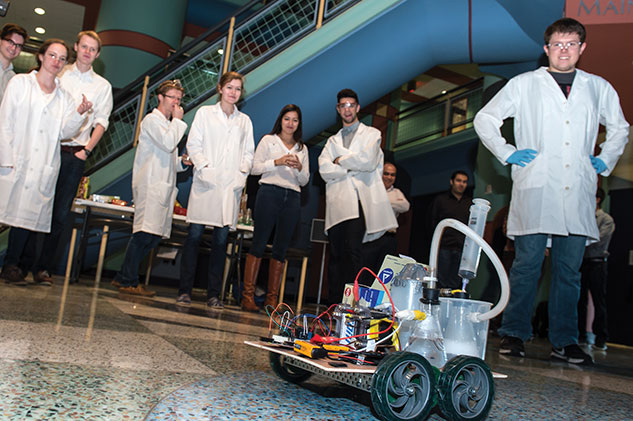
Photo by Jeff Fitlow
Better Cars Through Chemistry
-
Rice students designed and built small, chemical-powered cars
-
Hydrogen made one car go; iodine made it stop
A SCHOOL OF ENGINEERING grant allowed a group of professors to create a course called Chemical Car Engineering and Design, which provided a structured space for students to design, build and test chemically powered cars. They will enter the vehicles in the American Institute of Chemical Engineers’ Chem-E-Car regional competition this March, with hopes of advancing to the national competition in October.
“This was very much a student-driven course; students did the research and design themselves,” said Rafael Verduzco, an associate professor of chemical and biomolecular engineering, who taught the course last fall and is teaching another section this semester.
Two teams of eight students each built the cars and created posters explaining the vehicles’ capabilities. In competition, a car must stop and start based on a chemical reaction, carry a specified amount of water and go a certain distance. Teams are not told what weight the cars will carry or the distance they’re expected to travel until the competition. Once they receive the specifications from the judges, teams must determine the chemical reaction needed to power their vehicles, based on testing they’ve done throughout the building phase.
“I worked on the starter for our car,” said senior Daniela Cleary. “And we built our fuel cell from individual parts we’d ordered online.” Cleary said it was a challenge because she hadn’t built anything before. “We would troubleshoot and talk to the company that sold us the parts, and they were incredibly helpful in giving us advice.”
Cleary’s team, C.H.U.C.K., was named for the man who helped them build the fuel cell. Their car was fueled by a hydrogen gas reaction in the 10-stack fuel cell and stopped by an iodine clock reaction apparatus.
“Having a hands-on class like this was pretty cool,” said junior Margaret Roddy. “It was a chance to learn other disciplines, like mechanical engineering. No one on our team had built anything like this before.” She was part of a team called The Moving Car.
“Lots of times, chemical engineers might be asked to design a power plant in their coursework, but they’re not going to be able to build one,” Verduzco added. “This was a way for students to take something from idea to completion.”
— HOLLY BERETTO
[tw-divider][/tw-divider]
We’re Number …
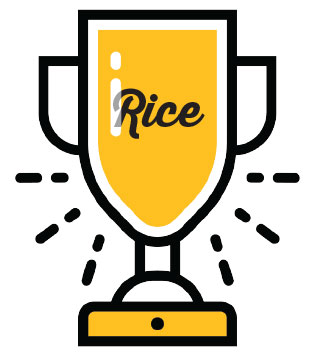 Last fall, Rice jumped from No. 18 to No. 15 out of 300 universities in the 2017 U.S. News & World Reports’ “Best Colleges” guidebook rankings. Rice shares this ranking with Cornell University, Vanderbilt University and the University of Notre Dame. Rice’s other rankings in the guidebook include:
Last fall, Rice jumped from No. 18 to No. 15 out of 300 universities in the 2017 U.S. News & World Reports’ “Best Colleges” guidebook rankings. Rice shares this ranking with Cornell University, Vanderbilt University and the University of Notre Dame. Rice’s other rankings in the guidebook include:
1
Top university in Texas
5
Strong commitment to undergraduate teaching
14
Best value among national universities
[tw-divider][/tw-divider]

Illustration by Alese Pickering
Believing Without Seeing
Researchers are creating science-learning modules for people with impaired vision using tactile and audio components.
TARGETING AN UNDERSERVED POPULATION, a research group in Rice’s Department of Materials Science and NanoEngineering is creating science-learning modules tailored to people with blindness or low vision (BLV). The group, led by Emilie Ringe, an assistant professor in materials science and nanoengineering, is collaborating with the Lighthouse of Houston, a nonprofit that assists BLV individuals, to teach basic science concepts through short learning activities in a fun and informal environment.
“Because science is traditionally taught in a very visual way, many BLV individuals haven’t participated in science education since school and have very few opportunities to stay current in the subject,” said Ringe. “My team aims to not only create educational science modules for people with visual impairments, but also to provide templates for organizations and educators to implement sessions and events on their own and increase the continuing education resources available to the BLV community.”
Of the 6.7 million Americans who are visually impaired, 63 percent are unemployed and 59 percent have not pursued a secondary education. Ringe and her team had to find ways to reach and engage audiences with a variety of backgrounds, including age, sightedness and education. To ensure the effectiveness of each science module, the researchers gathered feedback from a series of preliminary events conducted with blindfolded volunteers and BLV individuals.
“ My team aims to not only create educational science modules for people with visual impairments, but also to provide templates for organizations and educators to implement sessions and events on their own and increase the continuing education resources available to the BLV community.”
“While a Ph.D. student in Chicago, I was involved with the Blind Services Association and ran with a BLV individual as his guide once a week,” Ringe said. “When I got to Rice and had resources and a team at my disposal, I wanted to make a bigger impact for a larger audience and realized I could do so with science.”
Ringe’s group invited 20 BLV adults to test four modules that used tactile and auditory approaches to convey four basic science concepts: the metric system, material strength and deformation, transparency of materials and the electromagnetic spectrum.
“While we had a diverse participant group, they all shared an innate quality in wanting to learn something new,” Ringe said. “They haven’t had access to anything like this before.” Ringe and her team will host another event featuring the original modules and five new ones in May.
For more information about the learning modules, go to ringegroup.rice.edu.
— KENDALL SCHOEMANN
[tw-divider][/tw-divider]
Faculty Books
The Gnostic New Age: How a Countercultural Spirituality Revolutionized Religion From Antiquity to Today by April D. DeConick (Columbia University Press, 2016)
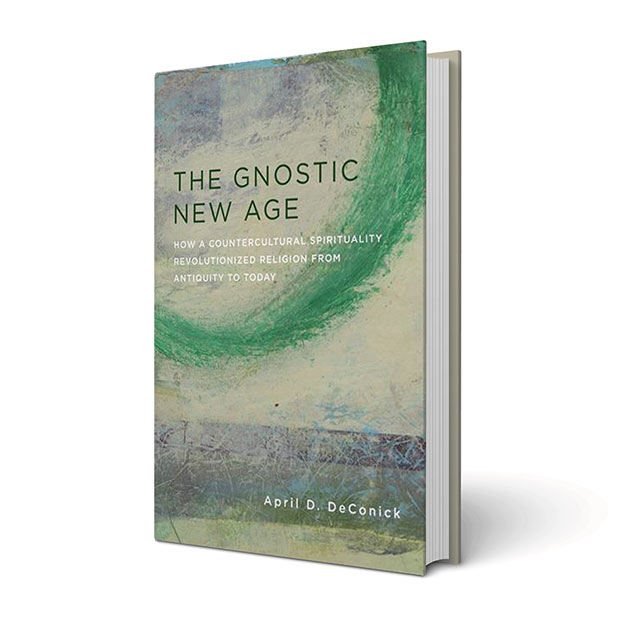 GNOSTICS WERE THE NEW AGERS of the ancient religious world. Mystical iconoclasts, they proposed that humans were manifestations of the divine, rather than fallen creatures whose only hope of salvation was strict obedience to God (and king). Their teachings, including that a spiritual union with God could be achieved through prayer and meditation alone, were subversive not just to early Christianity but to many other religions.
GNOSTICS WERE THE NEW AGERS of the ancient religious world. Mystical iconoclasts, they proposed that humans were manifestations of the divine, rather than fallen creatures whose only hope of salvation was strict obedience to God (and king). Their teachings, including that a spiritual union with God could be achieved through prayer and meditation alone, were subversive not just to early Christianity but to many other religions.
In her latest book, DeConick, the chair of Rice’s religion department, offers a history of Gnosticism that spans ancient Egypt, the Middle Ages and the occult movements of the 19th and early 20th centuries, culminating in contemporary New Age spirituality. Her focus is on the movement’s transgressive nature — the revolutionary ideas that led its scriptures to be forbidden by the early church. “The Gnostics,” she writes, “were the first to view traditional religion as the opiate of the masses, the drug that keeps people satisfied to serve the gods and their kings as obedient slaves and vassals.” It was an unpopular point of view to take when Christianity was just finding its footing. And while some scholars have argued that Gnosticism disappeared during the Middle Ages, after the Catholics burned the Gnostics’ publications and forced them into exile, DeConick argues that Gnosticism survived to re-emerge in the modern world within the tenets of New Age religion — and that its reach extends beyond New Age movements into American religion more generally.
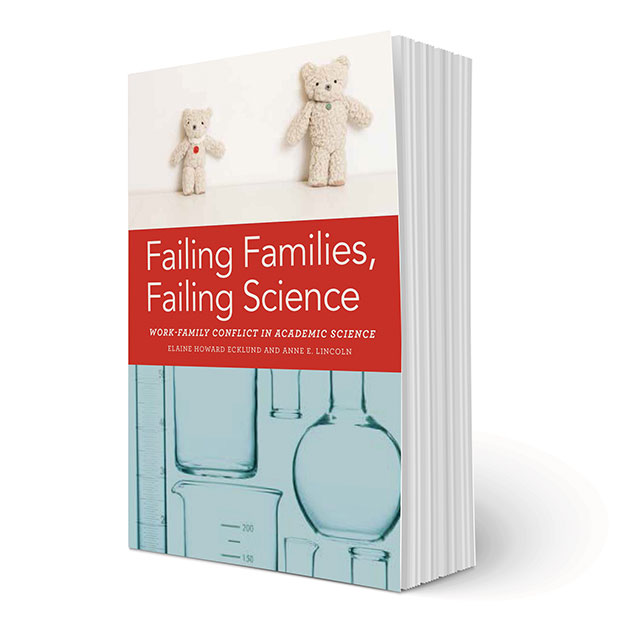 Failing Families, Failing Science: Work-Family Conflict in Academic Science by Elaine Howard Ecklund and Anne E. Lincoln (NYU Press, 2016)
Failing Families, Failing Science: Work-Family Conflict in Academic Science by Elaine Howard Ecklund and Anne E. Lincoln (NYU Press, 2016)
WHAT’S IT LIKE TO BE A SCIENTIST and a parent? Not easy, says Elaine Howard Ecklund, Rice’s Herbert S. Autrey Chair in Social Sciences, in a new book co-written with Anne E. Lincoln, an associate professor of sociology at Southern Methodist University. “Failing Families, Failing Science” examines the unique difficulties academic scientists face in balancing family and work. The book, based on surveys of more than 2,000 junior and senior scientists, is the first to tackle the experiences of both men and women working in science at top U.S. universities.
Women scientists meet with exceptional challenges, but men don’t have it much easier. Compounding the issue, academic scientists often marry other academic scientists, Ecklund and Lincoln observe.
“While women are hit harder by the pressures of elite academic science, the institution of science — and academic science, in particular — is not accommodating, possibly not even compatible, for either women or men who want to raise families,” Ecklund says. “Perhaps most importantly, our research reveals that early-career academic scientists struggle considerably with balancing their work and family lives.”
This isn’t just a concern for the scientists themselves, the authors conclude: It’s bad for all of us, since the challenges young scientists encounter may keep them from pursuing positions at top research universities — or force them out of academic science altogether, thereby depriving the rest of us of the benefits of their research.
— JENNIFER LATSON



